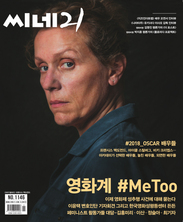2005년 한국 영화산업에 대해선 낙관적인 전망보다 비관적 전망이 훨씬 많이 나왔다. 거대예산영화 여러 편이 평론가와 관객의 큰 기대에도 불구하고 흥행에 실패했다(비록 지난해는 <태극기 휘날리며>와 <실미도> 개봉으로 극히 유별난 경우였지만). 해마다 나오는 통계를 살펴봐도 꾸준히 하향세를 이루고 있는 것을 볼 수 있다. 관객 또한 변한 것처럼 보인다. 과거에는 대대적인 마케팅으로 관객에게 영화가 볼 만하다고 설득할 수 있었던 반면, 요즘 대부분의 관객은 영화에 대한 입소문에 더 의존하면서 “기다려보는” 접근법을 취한다. 재미도 없으면서 과대홍보되는 영화들 때문에 관객은 영화를 선택해서 보는 데 더욱 조심스러워진 것 같다.
이런 경향은 투자자에게는 나쁜 소식일지도 모른다. 특히 관객이 무엇을 원하는지 잘 이해하지 못하는 이들에게는 더욱 그럴 것이다. 그러나 예측하기 힘든 한국 관객의 성향은 영화산업에서 계속 흥미로운 영화를 만들어내도록 하는 동력이 되기도 한다. 아시아영화에 익숙한 해외 영화업계 사람들은 한국에서 만들어지고 있는 다양한 범위의 영화들을 칭찬한다. 그렇지만 이런 경향은 제작자와 투자자들이 애초에 영화의 다양화에 힘쓴 결과라기보다는 한국 관객이 다음에는 무엇을 택할지를 예견할 수 없기 때문에 발생하는 것이다.
관객의 기준이 높아졌다면 한국 영화인들 또한 계속 영화의 질을 향상시킬 필요가 있을 것이다. 이미 예산이 상당히 증가된 이 상황에서 제작자는 후반작업 과정에 더 많은 신경을 쓰는 것이 이치에 맞을 것이다. 최근 한 영국 프로듀서와 얘기를 나누었는데, 그는 전반적으로 한국영화에 칭찬을 많이 했으나 후반작업의 수준이 낮은 것 같다고 말했다. 그의 말대로 후반작업은 두달을 하든 다섯달을 하든 비용에 별다른 차이가 없지만, 시간이 더 주어지면 영화의 질을 높이는 데는 확실히 큰 효과를 낼 수 있다. 극장을 나설 때 사운드 믹싱이나 편집에 대해 불평하는 관객은 별로 없을지 모르지만, 그런 것들이 바로 감정적인 차원에서 상당한 차이를 만들어내는 것이다.
이전에도 수없이 언급된 바이지만, 영화의 여러 요소 중 기술적인 성격이 가장 낮은 것, 즉 시나리오는, 캐스팅과 특수효과에 신경을 쏟는 것 때문에 간과되는 일이 너무 많다. 비록 한국에 재능있는 시나리오 작가들이 남부럽지 않을 정도로 있는 것 같긴 하지만, 각본을 읽고 그것이 어떻게 영화화될 것인지를 이해할 수 있는 제작자와 투자자는 그리 흔치 않다. 또한 각본을 보고 영화의 러닝타임을 예상하는 것이 어려운 사람들도 많은 것 같다. 영화를 두 시간 정도로 맞추기 위해 나중에 제작과정에서 각본의 20∼30%를 잘라내는 것은 일반적이다. 보통 종이상에서는 긴 시나리오가 짧은 것보다 더 흥미로워 보이긴 하지만, 나중에 심하게 잘려나가는 시나리오들은 잘되는 경우가 거의 없다.
이런 모든 것을 고려할 때 <웰컴 투 동막골> 같은 영화를 보면 마음이 든든해지고 신이 난다. 매력적으로 잘 형성된 시나리오에서부터 품질 좋은 CGI, 힘있는 연기와 연출까지 모든 면에 있어 영화는 정확하고 세심한 관리하에 만들어졌다. 대규모 고예산 영화를 제작할 때엔 소규모 영화를 제작할 때와는 다른 종류의 기술이 요구되는데, 지난 몇년간 한국 영화사들은 이것을 완성해내기 위해 여러 시행착오를 거치며 애써왔다. <웰컴 투 동막골>은 이런 의미에서 하나의 이정표가 되는 것 같으며, 이 영화를 보고 있으면 한국영화가 여전히 기술적, 창의적인 면에서 향상되고 있다고 낙관하게 된다.
Far more pessimism has been expressed about the Korean film industry in 2005 than optimism. Several big-budget films have failed at the box office, despite high expectation among critics and audiences. Year-to-year statistics have shown a steadily downward trend (though last year was a highly unusual case, given the release of Taegukgi and Silmido). Audiences also seem to have changed. Whereas in the past, a huge marketing campaign could convince viewers that a film was worth seeing, these days most audiences seem to take a "wait and see" approach, relying more on the word of mouth on a film. It seems that years of over-hyped, uninteresting movies have made viewers more careful about what they choose to see.
This may mean bad news for investors ? particularly those who don't really understand what viewers want ? but the unpredictable nature of Korean audiences is what keeps the film industry producing interesting movies. Film industry people abroad who are familiar with Asian cinema praise the wide range of films that are being made in Korea, but this is less the result of producers' and investors' commitment to diverse cinema, than the fact that you can never guess what Korean audiences will embrace next.
If the standards of audiences have risen, then Korean filmmakers will also need to keep improving the quality of their work. Given the fact that budgets have already risen quite high, it would make sense for filmmakers to place a greater focus on the process of post-production. Recently I was speaking with a British producer who had strong praise for Korean cinema in general, but who felt that standards in post production were rather low. As he said, there is very little difference in cost between spending two months or five months on post production, but the extra time can have a huge effect on the quality of a film. Although few viewers walk out of a theater complaining about sound mixing or editing, on an emotional level it makes a big difference.
Also, it's been said a thousand times before, but the least technical aspect of a film ? the screenplay ? is too often overlooked in favor of casting and special effects. Although Korea seems to boast its fair share of talented screenwriters, what is less common are producers and investors who can read a screenplay and understand how it will work as a film. It also seems that many people have a hard time judging how long a film will be from looking at a screenplay. It's not uncommon for 20-30% of a screenplay to be cut later in the production process, just to keep a film at two hours. On paper, long scripts usually appear more interesting than short scripts, but long scripts that need severe cutting later almost never turn out well.
Given all this, it's reassuring and exciting to watch a film like Welcome to Dongmakgol. From its well-formed, engaging screenplay to the high quality CGI to the strong acting and directing, every aspect of the film was executed with precision and care. Making a large-scale, big budget film requires a different set of skills from making a smaller film, and over the past few years Korean companies have struggled by trial and error to get it just right. Welcome to Dongmakgol feels like a milestone in this sense, and watching it creates a sense of optimism that on a technical and creative basis, Korean cinema is still improving.



